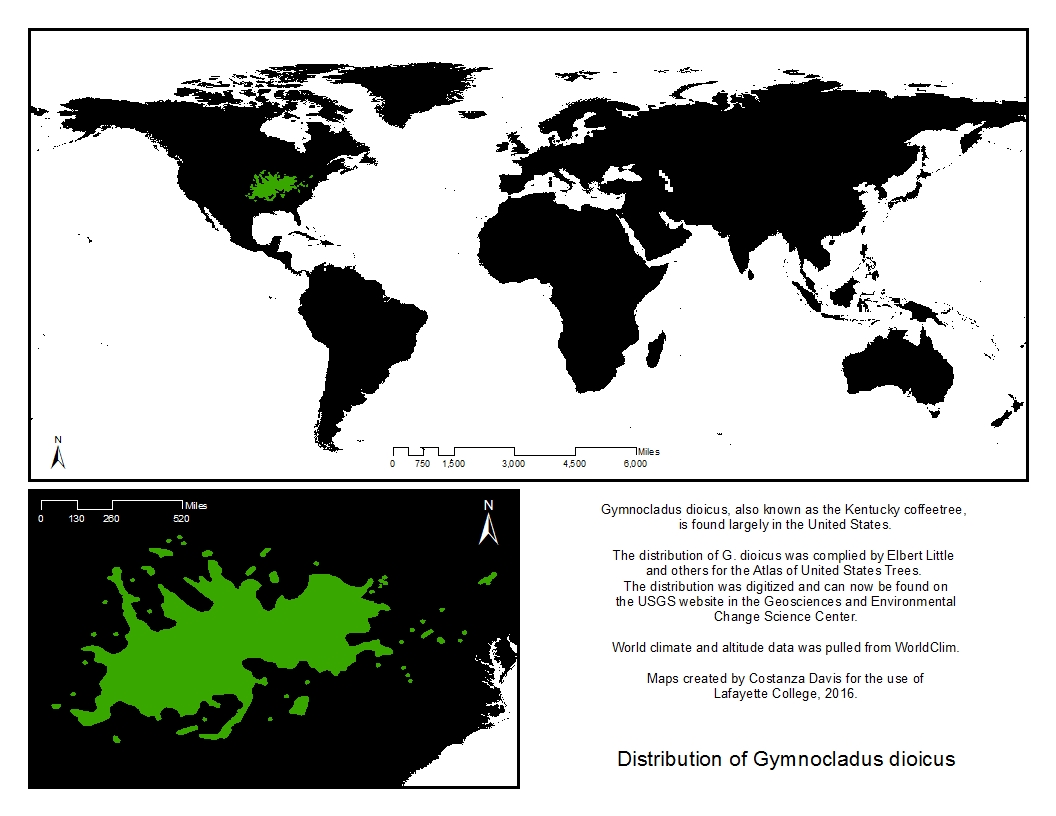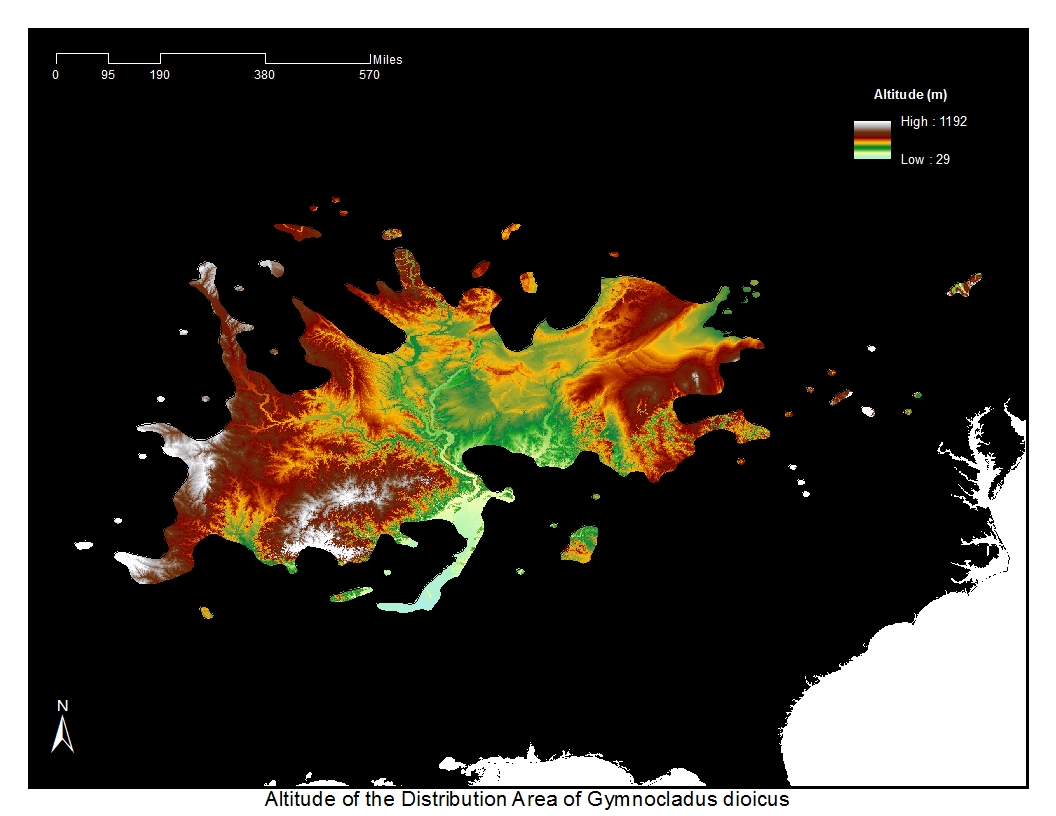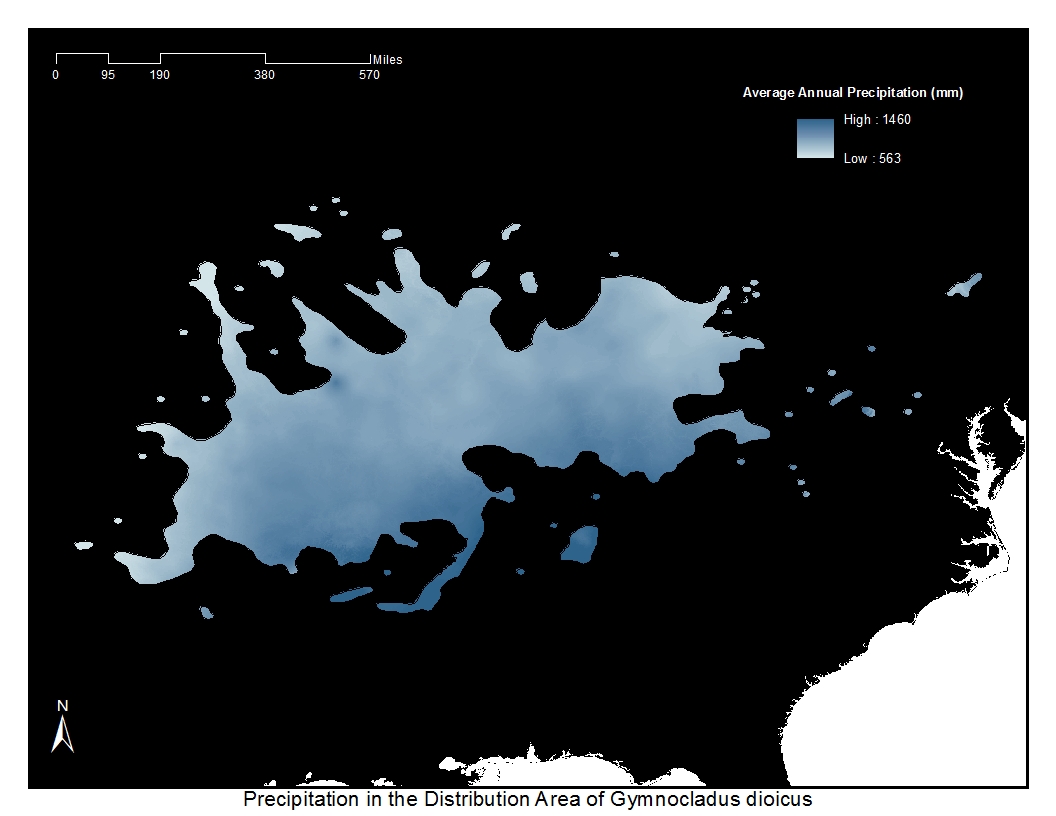Kentucky coffeetree, Gymnocladus dioicus, is also known as American coffee bean, American coffee berry, American mahogany, bean tree, chico du Canada, chicot, chicot tree, coffeebean, coffeebean-tree, coffeenut, coffeetree, dead tree, geweihbaum, Kentucky coffee-tree, Kentucky mahogany, mahogany, mahogany-bean, nettle-tree, nicker tree, nicker treet, and stump tree. The “coffee” in the common name is derived from usage by settlers. The toasted beans were used as substitutes for the less available coffee. “Dead tree” and “stump tree” are derived from the tree’s habit to go dormant for 6 months of the year. It is the only member of Gymnocladus native to North America.
Overharvesting of the tree has greatly reduced its numbers, and it is considered endangered in New York. Dissemination of trees is only done through water, as squirrels do not utilize the seeds, making it harder for the tree to spread. Even in its native habitat, Kentucky coffeetree is uncommon.
Kentucky coffeetree can grow to 100 feet with a 50 foot spread. Particularly tall specimens have reached 130 feet. Young specimens grow fast, though growth slows greatly with age.
The leaves are alternate compound leaves which can measure 1 to 3 feet in length, usually with 6 to 14 leaflets. Leaves emerge pink-bronze in the spring, turning dark bluish-green in the summer before becoming golden yellow in the fall. The flowers are largely inconspicuous, and are greenish-white and small. They appear in May and June, after the leaves. The fruit is a legume that matures in September or October. The seeds are incredibly hard, reputably 2,000 times harder than a jawbreaker.
Kentucky coffeetree prefers moist soils and full sun, and is usually found in previously glaciated areas. It can tolerate drought and flooding to an extent.
The leaves and raw seeds of Kentucky coffeetree are poisonous to humans and animals. In addition to settler’s usage of the seeds as coffee substitutes, the leaves have been used as fly poison and the fruit can be used as soap. Native Americans used the pulp to treat insanity, fever, and headaches, and thus dispersed the tree further throughout North America. The bark was used as an appetizer and tonic, the toasted seeds as food, and the pulp and leaves were used to create a laxative tea. The raw seeds could also be used to kill fish. While the tree has been cultivates as an ornamental tree since before 1748, it is rarely found as such.
Do not eat this tree.




